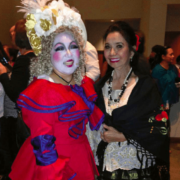ARTISTS are those few anywhere whose gifts set them apart; who by talent and wisdom and integrity are superior.
As of late, at the Ford Theater Walt Disney Concert Hall and Artani Theater, they flourished, as we watched them make beauty, unlock mysteries, serve the truth, making life out of the matter of their visions.
Their performances were literally sprinkled with divas, stars, cello and basses, roustabouts, ingénue, sax players, weeping violins, music of the starlit night and music of peace.
Happily there was something for everybody.
Between pokes of arrogance and humanity, between failure and triumph, the artist walked alone, listening to voices unheard by others: he or she has the command of the chosen instrument, whether it’s a word of voice.
By standard, these special people are as timeless as the universe itself. Yet why are certain expressions of art alive, while others die with the moment? Can anyone define the reasons? What does an artist say that is timeless? How does she/he say it to make it true, good, and beautiful?
How much is just the fad? How much is merely reflection or when baroque is right for one age and too effulgent for another? Why is Homer hard to read now, and James Joyce not? Can a standard of craftsmanship apply to art of all ages or does have its own definition?
When some respected critics proclaim there are no such thing as standards, this would only please those resentful of discipline; flatter the empty-minded (by calling them open-minded) it only comforts the confused, and encourages a form of abdicating from the responsibility among art observers. How does one detect the difference between freedom and sloppiness, between skill and sickness, strength and violence – or separate the sheep from the goats? By what values, then, are failures and success decided? Is there a way to know what we think is right? Questions persist.
Observers of all forms of arts, inexorably asks only what is worthy, beautiful and good. It is a personal decision that you can make for yourself. It takes independence and courage to open up to wrong decisions and humility, born of experience and association that allows one to separate intent from accident, design from experimentation, and pretense from conviction. Only then can one distinguish between a true creative art and fake arbitrary gestures, between fresh observation and stale clichés — all of which in a capsule was what we were taught in school. These are the right ones who make a clear pattern of so many intangible shades of art.
The human voice is said be the most beautiful music instrument and there are probably as many reasons when its musical textures give rise as certain questions are asked.
Is it the singer or the song, the glamour of the artists or the effect of their performances?
Do we go back to the more popular songs (revivals, the ballads, old time favorites) because our local artists, in a decent performance, can still give and provide the best opportunities for good singers, and good singing as always a major pleasure.
A musical drama fulfills an aspect of human need, the transmission through music, of the many forms of drama in which the human condition deals and should be approached with keen anticipation rather than an act of funerary penance as in the classical operas.
Our own artists excel and abound. They give us a world with beauty, heart and soul, as they grow through the times out of so many intangible.







